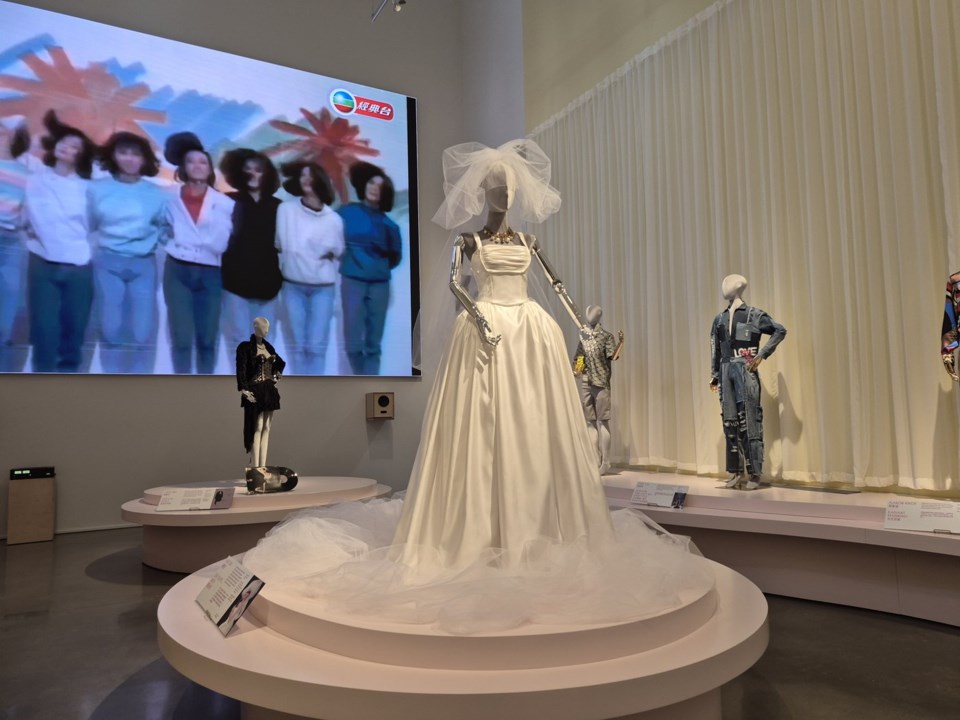VANCOUVER — A new exhibition on Cantopop and Mandopop music in Vancouver is a Canadian story, says curator Melissa Karmen Lee.
The "Dream Factory" exhibit, opening Wednesday at the Chinese Canadian Museum, pays tribute to the golden age of Chinese pop music "through the lens of Chinese Canadian identity, migration and memory."
Its stories are anything but foreign, said Lee, who is also the museum's chief executive.
"It is a deeply local story about how many of these Cantopop stars (and) Mandopop stars made Vancouver their home. They lived here, they worked here, they grew up here," she said.
"They all deeply considered Canada a part of their identity, and we're so pleased to feature that in this exhibition."
Cantopop and Mandopop refer to Chinese-language pop music in the two most widely spoken tongues in the community, Cantonese and Mandarin.
The exhibit, running through May 2026, features a collection of music from the genres between 1980 and 2000, when stars such as Leslie Cheung and Anita Mui wowed fans globally.
But Lee said many outside the community didn't realize that such giant stars were living among them in Canada.
Lee pointed out that Cheung — a singer and actor who became known to western audiences by starring in movies including "Farewell My Concubine" and "Happy Together" — lived in Vancouver in the early 1990s.
A park bench that honours Cheung in the city's Stanley Park is a pilgrimage site for fans of the star, who died by suicide in 2003.
Lee said singer and actress Sally Yeh grew up in Victoria before reaching stardom.
The Cantopop and Mandopop genres are intrinsically connected to Canada's large Chinese communities, especially in neighbourhoods in Metro Vancouver and Toronto where their songs were ubiquitous at Chinese malls, restaurants and karaoke bars.
Vancouver native Stephanie Kong, who designed a wedding dress at the exhibit that was inspired by Mui's 2003 farewell performance, said Cantopop music saturated many of her childhood memories.
"Growing up here in Canada, that was definitely a part of my childhood," Kong said. "Going to Parker Place (a mall in Richmond, B.C.) and waiting while my parents were in those music stores buying LaserDiscs, and I would be like, 'What's taking so long?'
"Because I didn't quite understand it … So it's funny that it comes kind of full circle, coming as an adult and getting a new appreciation for what I've always kind of — for the lack of a better word — just dismissed when I was a kid."
In addition to costumes inspired by Cantopop and Mandopop in the exhibition's main room, there's a large screen blaring hit songs, a separate room featuring artwork using LaserDiscs, a stage set up for karaoke and listening stations for popular songs.
On one wall, original sheet music for famous Cantonese movies from Hong Kong composer Joseph Koo are displayed. Koo lived in Richmond before his death in 2023.
Lee said Cantopop culture seeped deep into many parts of Canada. She said Cheung's 1986 song "Monica" was anecdotally regarded as responsible for a large number of Chinese Canadian girls bearing the name.
"They listened to Cantopop in Vancouver, in Toronto," Lee said of immigrant waves to Canada. "They made this very Asian music part of this global Chinese diaspora community.
"So, part of the popularity of Cantopop and Mandopop across the globe was because of these overseas Chinese communities that made it really great.
"Immigrants that came in the '60s and the '70s, they brought over their own culture and … made it a uniquely Canadian experience. And so, it's a preservation of culture, but it's also an evolution of something that is Asian into Asian Canadian."
This report by The Canadian Press was first published May 28, 2025.
Chuck Chiang, The Canadian Press



